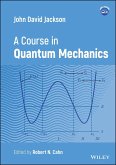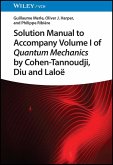Geometric Quantum Mechanics
Unique senior undergraduate/graduate level textbook on quantum mechanics that employs an intuitive, geometry-driven approach to the subject
Geometric Quantum Mechanics is a textbook for quantum mechanics at the senior undergraduate and graduate level and follows a unique approach to the material. The first chapter starts with the discussion of the properties of space leading to an understanding of operator techniques, Pauli matrices, spinors, quantum angular momentum, etc. Techniques from geometric algebra is frequently employed leading to more intuitive insights into the concepts.
The second chapter extends the results to spacetime. The study of the motion in and the production of electromagnetic fields leads to the Lorentz and Maxwell equations, respectively. The nonrelativistic limit leads to the Schrödinger/Heisenberg equations. This provides an overview how different fields are linked to each other.
The following chapters discuss applications of quantum mechanics. This covers a very broad area of physics showing how the ideas from quantum mechanics affect different fields. These are subdivided into chapters on single-particle problems, many-particle systems, and collective and emergent phenomena. The coverage includes the fundamental forces, atoms, molecules and solids, nuclear and particle physics, mass generation and the Higgs field, superconductivity, superfluidity, etc. The book restricts itself to the essence of these topics allowing the reader to understand how quantum mechanics impacts modern-day physics and chemistry. It appeals to instructors and students due to its different approach with its extensive use of geometric algebra and the broad range of modern applications.
Unique senior undergraduate/graduate level textbook on quantum mechanics that employs an intuitive, geometry-driven approach to the subject
Geometric Quantum Mechanics is a textbook for quantum mechanics at the senior undergraduate and graduate level and follows a unique approach to the material. The first chapter starts with the discussion of the properties of space leading to an understanding of operator techniques, Pauli matrices, spinors, quantum angular momentum, etc. Techniques from geometric algebra is frequently employed leading to more intuitive insights into the concepts.
The second chapter extends the results to spacetime. The study of the motion in and the production of electromagnetic fields leads to the Lorentz and Maxwell equations, respectively. The nonrelativistic limit leads to the Schrödinger/Heisenberg equations. This provides an overview how different fields are linked to each other.
The following chapters discuss applications of quantum mechanics. This covers a very broad area of physics showing how the ideas from quantum mechanics affect different fields. These are subdivided into chapters on single-particle problems, many-particle systems, and collective and emergent phenomena. The coverage includes the fundamental forces, atoms, molecules and solids, nuclear and particle physics, mass generation and the Higgs field, superconductivity, superfluidity, etc. The book restricts itself to the essence of these topics allowing the reader to understand how quantum mechanics impacts modern-day physics and chemistry. It appeals to instructors and students due to its different approach with its extensive use of geometric algebra and the broad range of modern applications.








